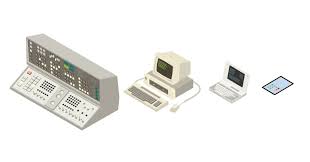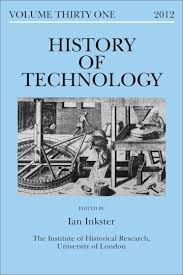
Exploring the Fascinating History of Computer Technology
The Evolution of Computer Technology
Computer technology has come a long way since its inception. The history of computers dates back to the early 20th century when mechanical devices were used for calculations. Over the years, there have been significant advancements that have revolutionized the way we live and work.
One of the most notable milestones in computer technology was the development of the first electronic digital computer in the 1940s. This invention paved the way for modern computers that we use today. The introduction of transistors in the 1950s further improved computer efficiency and reliability.
In the 1970s, personal computers became more accessible to individuals and businesses, leading to a surge in technological innovation. The emergence of microprocessors in the following decade made computers smaller, faster, and more affordable.
The 1990s witnessed a rapid expansion of the internet, connecting people across the globe and transforming communication and information sharing. This era also saw the rise of mobile computing with laptops and smartphones becoming ubiquitous.
Today, we are entering the era of artificial intelligence and quantum computing, where machines can perform complex tasks with incredible speed and accuracy. The possibilities for computer technology seem limitless as researchers continue to push boundaries and explore new frontiers.
In conclusion, the history of computer technology is a testament to human ingenuity and innovation. From humble beginnings to cutting-edge advancements, computers have become an integral part of our daily lives, shaping society in ways we could never have imagined.
9 Milestones in the Evolution of Computer Technology
- The first electronic digital computer, ENIAC, was completed in 1945.
- The invention of the transistor in 1947 revolutionized computer technology by enabling miniaturization and faster processing speeds.
- The Integrated Circuit (IC) was developed in the late 1950s, leading to further miniaturization and increased computing power.
- The first personal computer, the Altair 8800, was released in 1975, marking a shift towards consumer-oriented computing.
- Apple introduced the Macintosh in 1984 with a graphical user interface and mouse, setting new standards for personal computing.
- The World Wide Web was created by Tim Berners-Lee in 1989 as a way to share information globally over the Internet.
- Mobile computing saw a significant boost with the introduction of smartphones like the iPhone in 2007, combining communication and computing capabilities.
- Cloud computing emerged as a major trend in the early 21st century, offering scalable storage and processing resources over the internet.
- Artificial Intelligence (AI) has become increasingly integrated into computer technology applications for automation, data analysis, and machine learning.
The first electronic digital computer, ENIAC, was completed in 1945.
In 1945, a groundbreaking achievement in the history of computer technology was realized with the completion of the first electronic digital computer, ENIAC. This massive machine marked a significant milestone, ushering in a new era of computing capabilities that would shape the future of technology. ENIAC’s development paved the way for modern computers, demonstrating the potential for electronic devices to perform complex calculations with unprecedented speed and accuracy. Its creation laid the foundation for further innovations in the field of computer science, setting the stage for a technological revolution that continues to evolve to this day.
The invention of the transistor in 1947 revolutionized computer technology by enabling miniaturization and faster processing speeds.
The invention of the transistor in 1947 marked a pivotal moment in the history of computer technology. This groundbreaking development revolutionized the field by enabling miniaturization and faster processing speeds. Transistors replaced bulky and less efficient vacuum tubes, making computers smaller, more reliable, and capable of handling complex tasks with increased efficiency. This technological advancement laid the foundation for the modern era of computing, shaping the way we interact with technology and setting the stage for further innovations in the years to come.
The Integrated Circuit (IC) was developed in the late 1950s, leading to further miniaturization and increased computing power.
The development of the Integrated Circuit (IC) in the late 1950s marked a significant milestone in the history of computer technology. This breakthrough innovation enabled further miniaturization of electronic components and paved the way for increased computing power in a smaller form factor. The introduction of ICs revolutionized the field of electronics, making it possible to pack more functionality into smaller devices, ultimately contributing to the advancement and proliferation of modern computing systems.
The first personal computer, the Altair 8800, was released in 1975, marking a shift towards consumer-oriented computing.
In 1975, a significant milestone in the history of computer technology was achieved with the release of the Altair 8800, recognized as the first personal computer. This groundbreaking development marked a pivotal shift towards consumer-oriented computing, democratizing access to technology and empowering individuals to have computing power at their fingertips. The introduction of the Altair 8800 revolutionized the way people interacted with computers, setting the stage for the widespread adoption of personal computing devices that would ultimately shape our modern digital landscape.
Apple introduced the Macintosh in 1984 with a graphical user interface and mouse, setting new standards for personal computing.
In 1984, Apple made a groundbreaking contribution to the history of computer technology by introducing the Macintosh. This innovative product featured a graphical user interface and a mouse, setting new standards for personal computing. The Macintosh’s user-friendly design and intuitive interface revolutionized the way people interacted with computers, making them more accessible and easier to use for a wider audience. Apple’s introduction of the Macintosh in 1984 marked a pivotal moment in computer history, shaping the future of personal computing and influencing the development of technology for years to come.
The World Wide Web was created by Tim Berners-Lee in 1989 as a way to share information globally over the Internet.
The World Wide Web, developed by Tim Berners-Lee in 1989, revolutionized the way we share information on a global scale through the Internet. Berners-Lee’s visionary creation laid the foundation for a connected world where individuals could access and exchange data seamlessly, leading to an unprecedented era of communication and knowledge-sharing.
Mobile computing saw a significant boost with the introduction of smartphones like the iPhone in 2007, combining communication and computing capabilities.
The introduction of smartphones like the iPhone in 2007 marked a significant milestone in the history of computer technology, particularly in the realm of mobile computing. These devices revolutionized the way we interact with technology by seamlessly combining communication and computing capabilities into one sleek device. The integration of powerful processors, touchscreens, and internet connectivity in smartphones not only made them indispensable tools for everyday tasks but also paved the way for a new era of mobile computing that continues to evolve and shape our digital landscape.
Cloud computing emerged as a major trend in the early 21st century, offering scalable storage and processing resources over the internet.
Cloud computing emerged as a major trend in the early 21st century, revolutionizing the way data is stored and processed. By offering scalable storage and processing resources over the internet, cloud computing has provided businesses and individuals with unprecedented flexibility and efficiency. This technology has enabled organizations to access vast amounts of data without the need for on-site infrastructure, leading to cost savings and improved productivity. The advent of cloud computing has transformed the digital landscape, paving the way for new innovations and opportunities in the field of computer technology.
Artificial Intelligence (AI) has become increasingly integrated into computer technology applications for automation, data analysis, and machine learning.
Artificial Intelligence (AI) has become a cornerstone in the evolution of computer technology, significantly enhancing applications across various fields. By enabling automation, AI reduces the need for human intervention in repetitive tasks, thereby increasing efficiency and accuracy. In data analysis, AI algorithms can process vast amounts of information at unprecedented speeds, uncovering patterns and insights that would be impossible to detect manually. Machine learning, a subset of AI, empowers computers to learn from data and improve their performance over time without explicit programming. This integration of AI into computer technology is driving innovation and transforming industries by making systems smarter and more adaptive.



